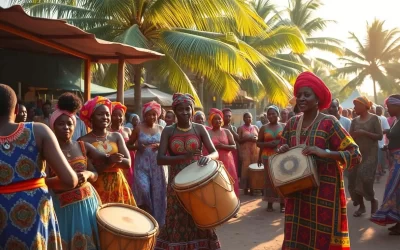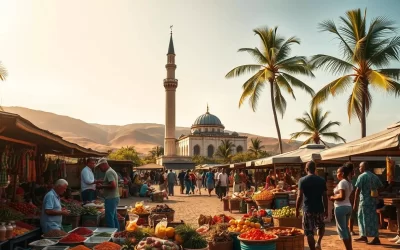Nestled in the Indian Ocean, Comoros is an archipelago that boasts untouched natural beauty and a rich cultural heritage. With its volcanic origins, the islands offer a unique landscape that’s both breathtaking and diverse.
You’ll experience a blend of African, Arab, and French influences that create a distinctive cultural experience. The Union of Comoros comprises three main islands: Grande Comore, Mohéli, and Anjouan, each offering unique attractions and activities. From volcanic hikes to pristine beaches, Comoros is an authentic destination that’s relatively untouched by mass tourism.
As you plan your visit, the dry season from May to November is ideal. The local currency is the Comorian franc, and you’ll hear Comorian, Arabic, and French being spoken. Whether you’re an adventure seeker or looking for relaxation, Comoros has something for everyone.
Discovering the Untouched Beauty of Comoros
Comoros, an archipelago of stunning natural beauty, remains one of the world’s best-kept secrets. Many have yet to see and discover the great wonders that Comoros has to offer, and those who have been have one piece of advice: get there before it becomes infested by flocks of tourists and commercialization.
Why You Should Visit Comoros Now
So, what makes Comoros so special? For starters, it remains one of the world’s least visited countries despite its incredible natural beauty and cultural richness. Located in the Indian Ocean between Madagascar and the African mainland, the archipelago is geographically unique, making it a fascinating destination for travelers.
The country’s history is a rich tapestry of African, Arab, Persian, and European influences, creating a unique cultural identity. The limited tourism infrastructure has preserved the authentic character and untouched beauty of the islands, offering visitors a chance to experience an unspoiled destination.

- The diverse ecosystems found across the islands, from volcanic mountains to pristine coral reefs, are a nature lover’s paradise.
- Comoros is home to unique biodiversity, including endemic species found nowhere else in the world.
- The warm hospitality of Comorian people and their traditional way of life offer visitors a chance to experience local culture firsthand.
- There are opportunities for sustainable tourism that benefit local communities, making a visit to Comoros a responsible travel choice.
Visiting Comoros now offers a chance to see a destination before mass tourism potentially changes it. There’s growing interest in Comoros among adventure travelers and those seeking off-the-beaten-path destinations, making it an exciting time to explore this hidden gem.
| Aspect | Description | Benefit |
|---|---|---|
| Location | Indian Ocean, between Madagascar and Africa | Unique geographical position |
| Culture | Blend of African, Arab, Persian, and European influences | Rich cultural heritage |
| Ecosystems | Volcanic mountains, pristine coral reefs | Diverse natural beauty |
| Biodiversity | Endemic species found nowhere else | Unique wildlife experiences |
Hiking Mount Karthala: The World’s Largest Active Volcano
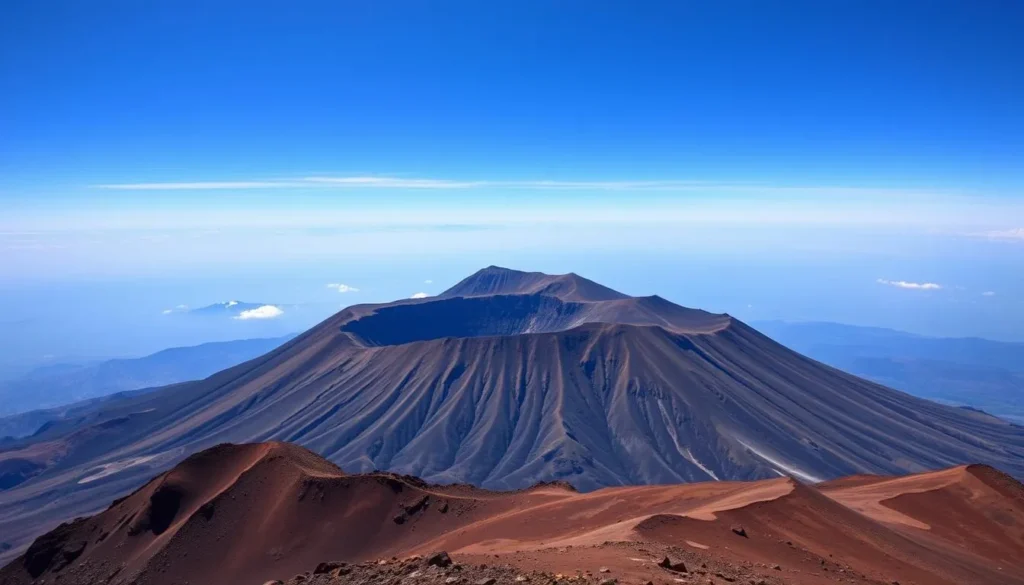
For adventure seekers, hiking Mount Karthala, the world’s largest active volcano, is an unmissable experience. Located on Grande Comore, this natural wonder stands at 2,361 meters (7,746 feet) above sea level.
The Challenge and the Reward
Mount Karthala is not just a hike; it’s an adventure that tests your limits. The ascent can be challenging, but the views from the top are unmatched. As you climb, you’ll witness a variety of ecosystems, from lush tropical forests to a lunar-like terrain near the summit.
The volcano’s history is marked by significant eruptions, with the most recent major events occurring in 2005 and 2007. These eruptions have shaped the landscape, creating a unique environment that supports endemic flora and fauna.
Key Highlights of Hiking Mount Karthala:
- Stand at 2,361 meters (7,746 feet) above sea level, the highest point on Grande Comore.
- Explore the geological significance of the volcano and its history of eruptions.
- Enjoy panoramic views of Grande Comore from the summit.
- Discover unique flora and fauna adapted to the volcanic environment.
- Experience the thrill of hiking on an active volcano.
Hiring a local guide is highly recommended for safety and to gain insights into the natural and cultural history of the area. The dry season, from May to November, is the best time for the hike.
Tour operators like Comores Tours and Safari offer guided expeditions to the summit, making it easier for visitors to plan their adventure.
Conquering Mount Karthala is a rewarding experience that offers a sense of achievement and memories to last a lifetime.
Exploring Grande Comore and the Arabian Charm of Moroni
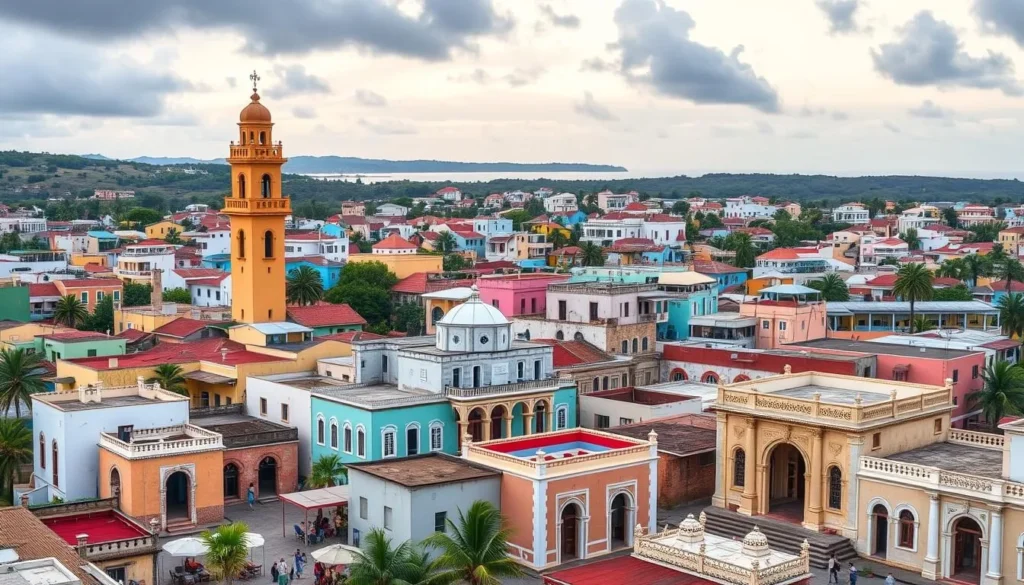
As you step foot on Grande Comore, you’re immediately enveloped in the island’s unique blend of Arabian and African influences. The capital city, Moroni, is a must-visit destination, exuding an intoxicating Arabian charm with its whitewashed buildings, narrow winding streets, and prominent mosques.
Discovering the Capital and Its Surroundings
Moroni’s Vendredi Mosque, or Friday Mosque, is the architectural centerpiece, boasting a distinctive minaret and historical significance. The Old Quarter, or Medina, is another highlight, featuring traditional Swahili-Arabic architecture, carved wooden doors, and bustling markets.
The city’s cultural melting pot is evident in its African, Arab, and French influences, creating a unique atmosphere. Visitors can explore the National Museum of Comoros and the old port area to gain a deeper understanding of the local culture.
Grande Comore serves as the main entry point for most visitors and is a good base for exploring the rest of the country. Day trips to nearby attractions, such as the Coelacanth Marine Park and volcanic beaches, are highly recommended.
A walking tour of Moroni is one of the best ways to experience the capital’s charm and history. Be sure to visit the local markets to interact with friendly locals and experience everyday life.
Best Beaches in Comoros for Relaxation
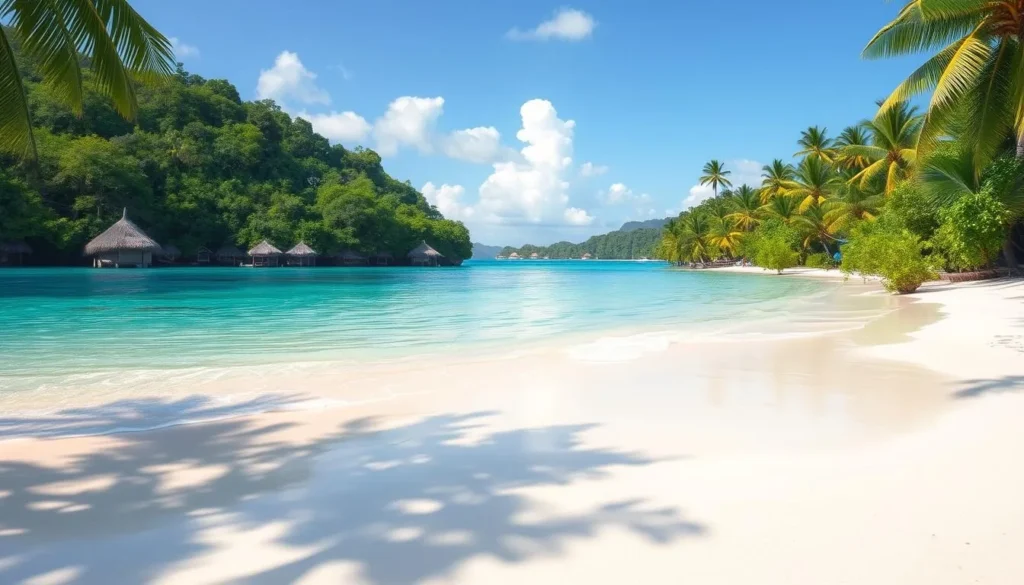
With its pristine coastline, Comoros is a haven for those seeking a tranquil beach experience. The beaches here are characterized by their unspoiled nature, remaining free from overdevelopment and mass tourism.
Pristine Coastal Escapes
Comoros boasts an array of stunning beaches that are perfect for relaxation. You can enjoy the distinctive black volcanic sand beach found on Grande Comore, a result of the island’s volcanic origins.
Some of the top beaches include Chomoni Beach on Grande Comore, known for its mix of black and white sand, and Bouni Beach near Moroni, which is perfect for day trips. Mitsamiouli Beach in northern Grande Comore offers crystal-clear waters and excellent swimming conditions.
You can also visit Bimbini Beach on Anjouan Island, one of the most pristine white sand beaches in the archipelago, or Nioumachoua Beach on Mohéli, a tranquil spot where you might spot nesting sea turtles during the right season.
These spots offer a serene atmosphere, allowing you to enjoy your days relaxing on the beach and taking in the breathtaking view of the sea. Don’t forget to bring essential supplies as beach facilities are minimal.
Diving and Snorkeling in Pristine Waters
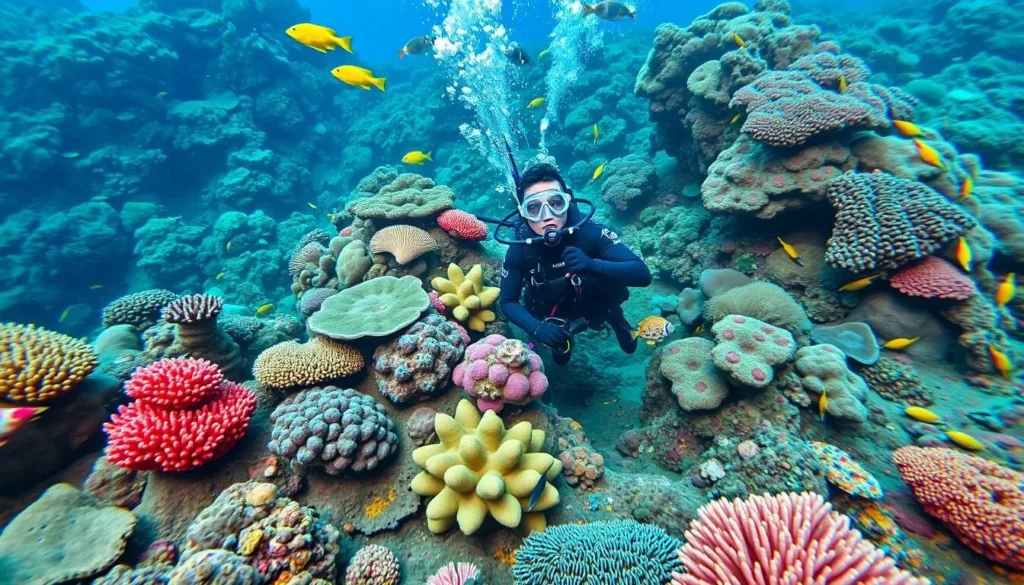
Dive into the untouched beauty of Comoros, where the sea meets vibrant coral reefs and an array of marine life. The islands offer a unique diving experience with their pristine waters and rich marine biodiversity.
Underwater Adventures in Comoros
Comoros is emerging as a premier diving destination, boasting healthy coral reefs and diverse marine ecosystems. The advantage of diving in Comoros lies in its uncrowded dive sites and pristine underwater environments, rarely visited by tourists.
The rich marine biodiversity includes over 1,000 fish species, numerous coral varieties, and the possibility of encountering rare species. You can explore the marvelous and distinct marine life of the region on a scuba diving or snorkeling trip.
Some of the premier diving locations include Trou du Prophète near Mitsamiouli, known for its dramatic underwater topography, and the Coelacanth Marine Park on Grande Comore, named after the prehistoric “living fossil” fish occasionally spotted in deep waters.
Mohéli Marine Park offers some of the best snorkeling opportunities, with shallow reefs accessible from the shore. You can also experience diving with sea turtles, dolphins, and seasonal whale watching in Comoros waters.
Practical information about diving facilities: there are dive centers in Mitsamiouli and Moroni that offer equipment rental and guided dives. The best time for diving is from April to November when visibility is typically at its best.
For non-divers, snorkeling is an accessible alternative, with many shallow reefs perfect for exploration from the surface. Whether you’re looking for a diving or snorkeling trip, Comoros provides numerous opportunities for an unforgettable underwater adventure.
Visiting Dziani Boundouni: The Sulfur Crater Lake

A Unique Volcanic Wonder
Tucked away in the heart of Mohéli Island lies Dziani Boundouni, a breathtaking sulfur crater lake. This natural wonder is a must-visit attraction for any traveler seeking an unforgettable experience. Formed by volcanic activity, the lake’s distinctive emerald-green color is a result of its high sulfur and mineral content.
The journey to Dziani Boundouni begins in Fomboni, the capital town of Mohéli, known for its beautiful beaches. From there, a scenic hiking trail leads to the crater lake, offering a moderate trekking experience that lasts approximately 2-3 hours. Along the way, you’ll encounter diverse ecosystems, ranging from coastal vegetation to highland forests.
Upon reaching the crater rim, you’ll be rewarded with panoramic views overlooking the lake and the surrounding landscapes of Mohéli. The area around the lake is home to unique flora that has adapted to the sulfuric environment, making it a fascinating spot for nature enthusiasts.
To ensure a safe and enjoyable trip, it’s recommended to bring plenty of water and sun protection, as the trail offers limited shade. Hiring a local guide is also advisable, as they can provide valuable insights into the lake’s cultural significance to the Comorian people.
While the lake’s scenery is captivating, it’s essential to note that swimming is not recommended due to the high sulfur content and potential health risks.
Mohéli Island: Marine Park and Traditional Boat Building

As the least developed of the main Comoros islands, Mohéli offers a pristine and unspoiled environment. Mohéli Marine Park, located off the island’s southern coast, is a significant conservation site, known for its population of green turtles and spectacular coral reefs.
Exploring Comoros’ Ecological Treasure
The marine park is a haven for endangered green sea turtles, which nest on its beaches year-round, with the peak season from April to August. Local communities are involved in conservation efforts, with former poachers now working as turtle guardians. You can observe traditional boat building practices in villages like Fomboni, where craftsmen construct wooden dhows using techniques passed down for generations.
Visitors can experience authentic Comorian hospitality by staying in local villages, making Mohéli a unique ecotourism destination. Niumashuwa Bay serves as a cultural hub and gateway to the marine park, offering opportunities to arrange boat tours. The island is also home to other natural attractions, including waterfalls and forests that are home to the Livingstone’s fruit bat.
Anjouan Island: 17th Century Swahili-Shirazi Architecture
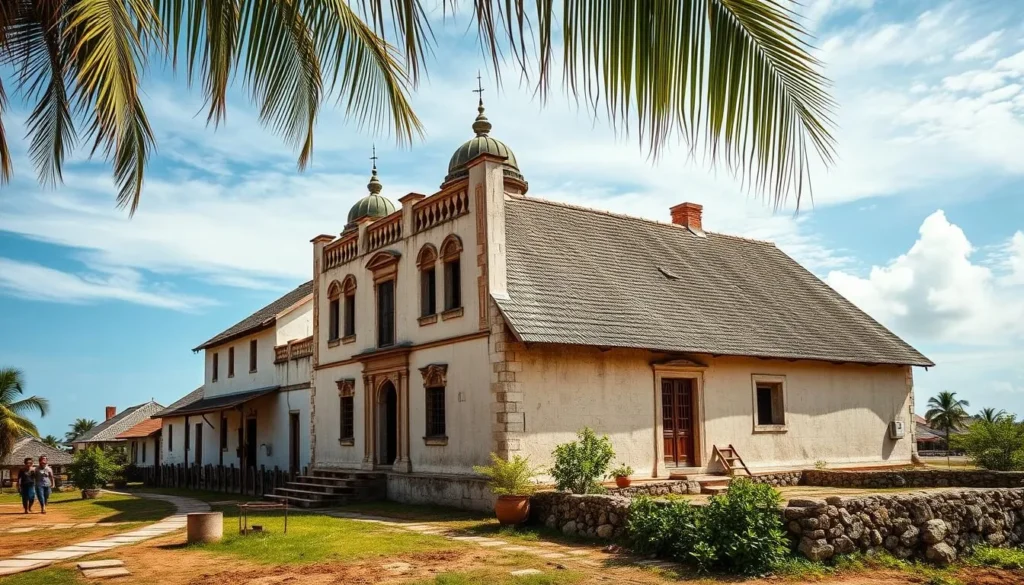
Anjouan, the “Pearl of the Comoros,” boasts 17th-century Swahili-Shirazi architecture and breathtaking scenery. You can explore the island’s capital, Mutsamudu, with its well-preserved old town and historic citadel.
Discovering the Island of Perfume
The town’s twisting alleyways are lined with old houses, and the center is dominated by the old citadel and several mosques. You can experience the rich history and cultural heritage of Anjouan by visiting these sites.
The island is also known for its perfume industry, with multiple distilleries in Bambao where you can learn about traditional ylang-ylang production methods. Anjouan’s natural beauty includes steep mountains, deep valleys, and cascading waterfalls like Tratinga Falls.
You can relax on Moya Beach, with its white sand and turquoise waters, or visit the sacred lake of Dzialandzé, surrounded by legends. Exploring the rural villages of Anjouan will give you insight into traditional farming practices and daily life unchanged for centuries.
Shopping for Unique Souvenirs and Spices

The islands of Comoros are a treasure trove of unique souvenirs and aromatic spices waiting to be discovered. As you explore the local markets, you’ll find a variety of authentic Comorian crafts that reflect the culture and food of this enchanting country.
A Piece of Comoros to Take Home
In the capital city of Moroni and other town centers, you can discover intricately embroidered kofia (skullcaps), carved wooden items, and shell jewelry made from locally collected seashells. These make for distinctive souvenirs that you can bring home.
Some highlights of your shopping experience in Comoros should include:
- Exploring the vibrant markets of Moroni and other town centers for authentic Comorian crafts and souvenirs
- Highlighting ylang-ylang essential oil, Comoros’ most famous export, used in luxury perfumes worldwide
- Discovering traditional handicrafts unique to Comoros
- Featuring carved wooden items that showcase skilled local craftsmanship
- Discussing the variety of spices available, including vanilla, cloves, cinnamon, and nutmeg grown on the islands
When shopping, remember to engage in friendly bargaining and support fair trade practices. The Volo Volo Market in Moroni is recommended for the widest selection of crafts, spices, and everyday items. Be mindful of export restrictions and customs considerations when bringing certain items back home, particularly plant products.
Comoros: Best Things to Do Before Tourism Takes Over
The Comoros Islands, with their breathtaking natural beauty and traditional way of life, are a must-visit destination for travelers seeking an authentic experience in an unspoiled setting.
Authentic Experiences in an Unspoiled Destination
Comoros offers a range of unique experiences that allow visitors to immerse themselves in local culture and untouched environments. You can participate in a traditional fishing expedition with local fishermen, using methods passed down through generations.
- Attend a Comorian wedding or cultural celebration to witness traditional music, dance, and customs.
- Learn about traditional cooking methods and sample authentic Comorian cuisine in family homes.
- Visit remote villages accessible only by foot or boat, where traditional ways of life continue largely unchanged.
- Experience a traditional Comorian coffee ceremony, an important social ritual demonstrating local hospitality.

To truly experience Comoros, consider volunteering with local conservation efforts, such as sea turtle protection programs, or witness traditional healing practices. Staying in locally-owned accommodations rather than international chains supports the community and provides cultural insights.
By embracing respectful tourism practices, you help preserve the authentic character of Comoros as visitor numbers gradually increase. Make the most of your visit by engaging in these bucket-list experiences and savoring the local food that Comoros has to offer.
Conclusion
Now is the perfect time to explore Comoros. With its unspoiled character, Comoros offers a range of things to do, from diving to hiking Mount Karthala. Plan to visit between May and November, and allow 10-14 days to explore the islands. With responsible tourism, you can contribute to local communities and conservation, making your trip rewarding.
The above is subject to change.
Check back often to TRAVEL.COM for the latest travel tips and deals.



